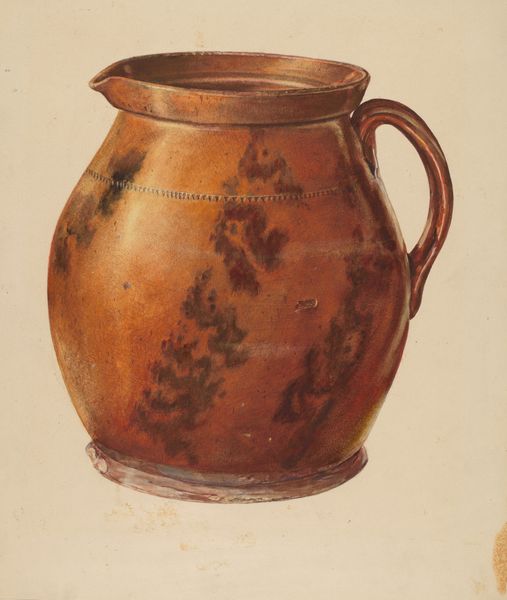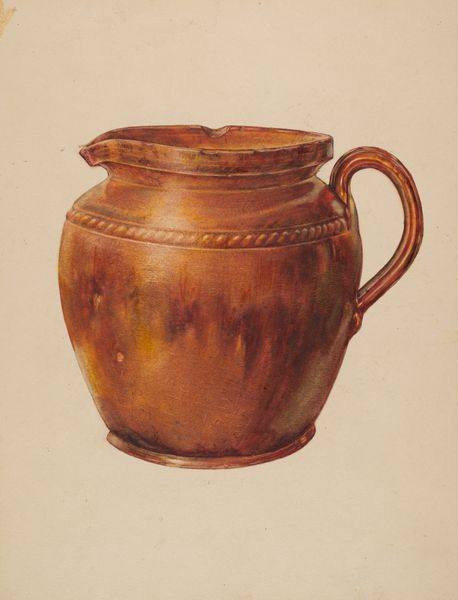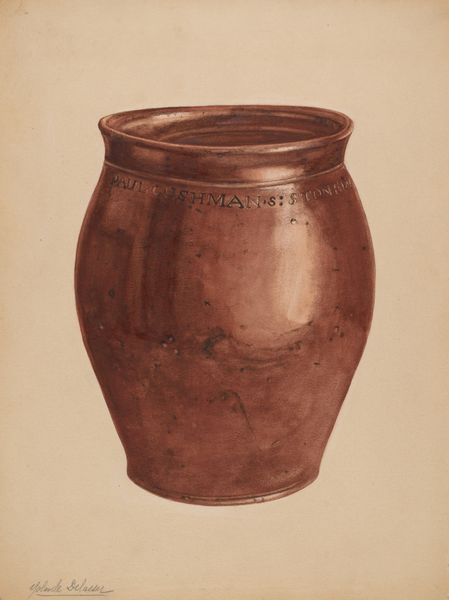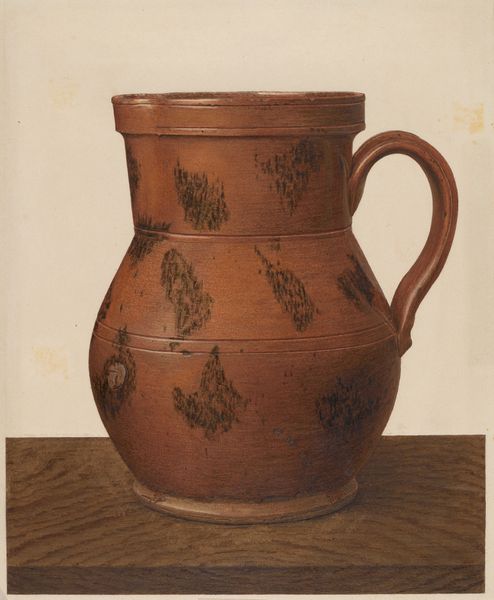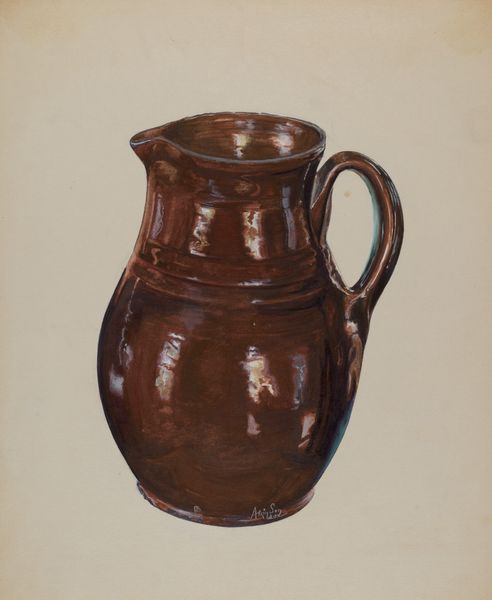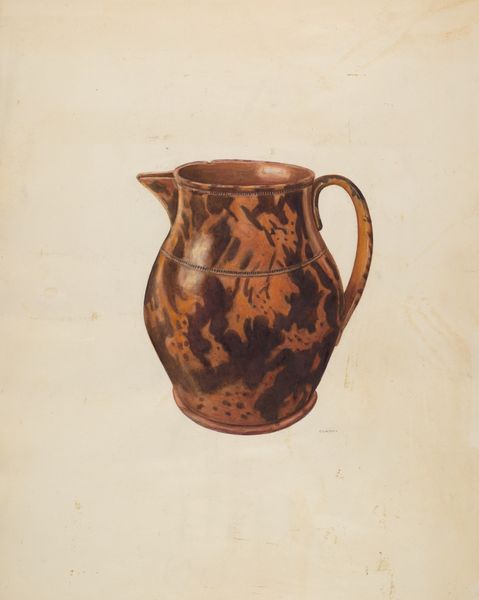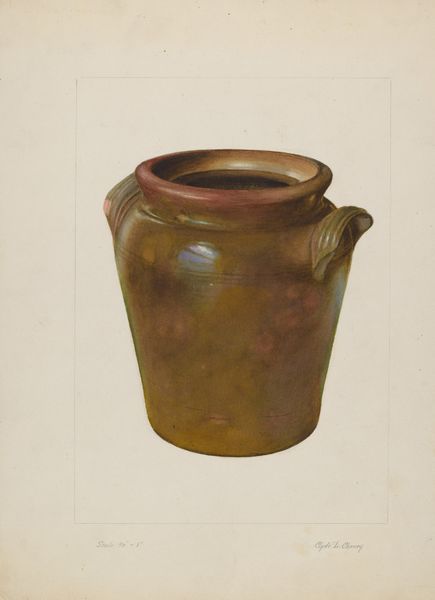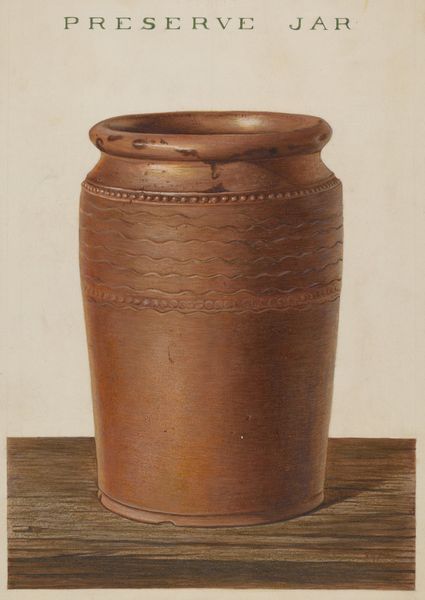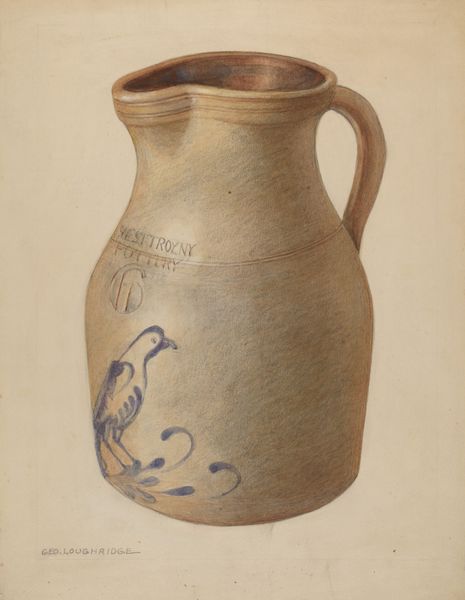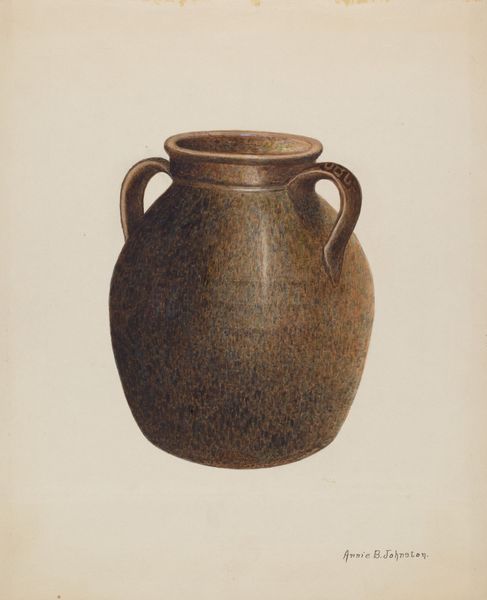
drawing, ceramic, earthenware
#
drawing
#
still-life-photography
#
ceramic
#
earthenware
#
stoneware
#
ceramic
#
earthenware
#
watercolor
Dimensions: overall: 30.5 x 26.2 cm (12 x 10 5/16 in.) Original IAD Object: 10" High
Copyright: National Gallery of Art: CC0 1.0
Curator: Looking at Philip Smith’s "Two Handled Jar - Stoneware" from around 1939, I’m struck by the weight and texture of it. It's got a simple, almost rustic presence. Editor: Absolutely. There's a grounded quality to it. I see labor, both in its making and potential use. How might this jar have figured within the domestic routines of the era? It makes me wonder about who owned it and how it connected to broader economic landscapes of the time. Curator: Smith captured this very effectively through his use of earthenware. Notice how he articulates each ridge and minor imperfection, a testimony to the tactile nature of ceramic work, drawing our attention to the relationship between maker, object, and user. It feels as if we can perceive the fingerprints of the artisan. Editor: It goes beyond a mere visual representation. Think about the gendered division of labor historically involved in pottery production and its potential connections to women's craft traditions. Is this "high art" or elevated craft? How did racial and economic inequalities impact ceramic production at the time? I’m seeing potential connections between the history of this medium and social structures. Curator: That tension you bring up regarding 'high art' is at the very core here. This period saw so many artists grappling with ways to bridge the gap between craft traditions and studio practices. I also observe a stillness in this image – this watercolor is almost photographic in its precise realism. The detail invites closer scrutiny of the surface treatment. Editor: Exactly! It prompts me to think of all the unseen labor that goes into producing not only the jar, but the raw materials to build the infrastructure around it. By emphasizing a utilitarian object, doesn't it subtly challenge notions of artistic prestige, urging us to question the role art plays in reflecting or perpetuating systems of inequality? Curator: By foregrounding the materials and making process, Smith creates an object lesson on the value of human effort. Editor: A humble still life becomes an archive for social history. Makes you consider the narratives behind even the most simple things.
Comments
No comments
Be the first to comment and join the conversation on the ultimate creative platform.
